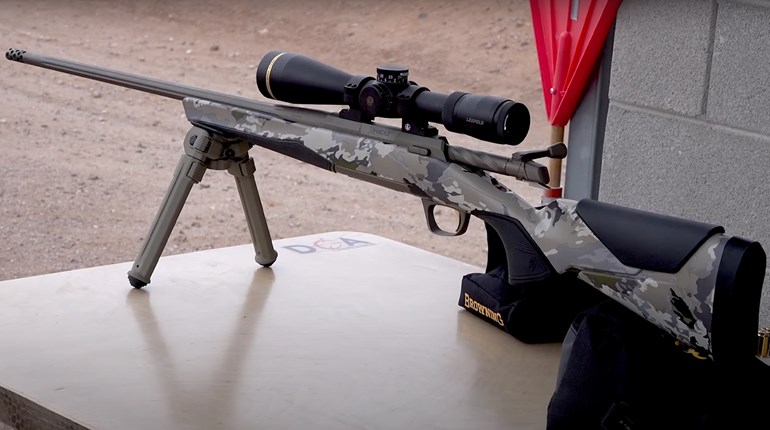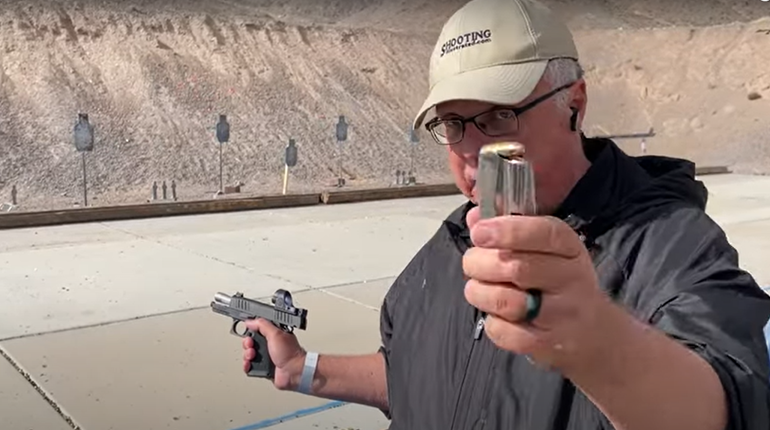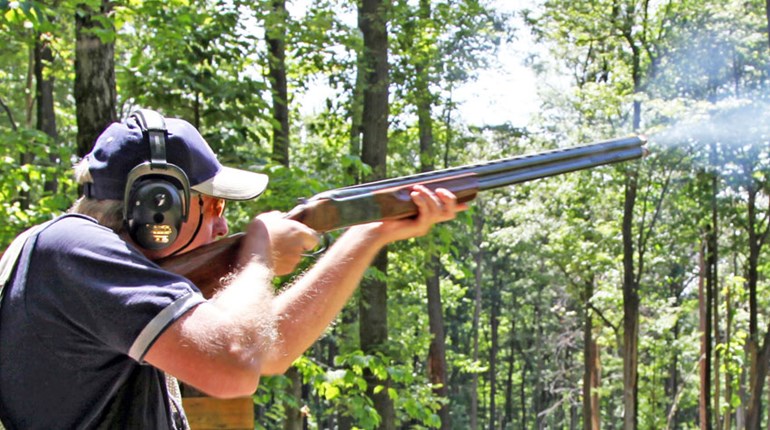
The German firm J.P. Sauer & Sohn is one of the oldest and most respected names in gunmaking. It was founded in 1751, making it the second-oldest gunmaker in the world (after Beretta).
Although Sauer rifles and shotguns may not be familiar by name to many Americans, the company gained renown here in the 1950s and ’60s, when it manufactured the first Mark V barreled actions for Weatherby. Today, Sauer is part of the industrial conglomerate that includes Blaser and Mauser, but it continues to operate independently from its own factory in the northern German city of Eckernförde.
Like most German gunmakers, Sauer is eclectic: Over two and a half centuries, it has manufactured double guns, drillings, shotguns and rifles of all sorts. Its latest bolt-action rifle is the Model 202, which in its take-down configuration (TD) incorporates that most beloved of German traits: the ability to mix, match, switch, change and reconfigure according to the demands of a particular situation.
As currently imported, the Model 202 TD comes in several grades ranging in price from $7,250 to $8,950; it is available in about a dozen different calibers, and when you multiply those choices by the available options, the range of possibilities with the 202 becomes too great to count. Not all of the Sauer models are imported to the U.S., however, so interested parties should request the latest information from the importer, Blaser USA.
The Model 202 TD Hatari is, as the name implies, Sauer’s safari-rifle configuration, and my test rifle had barrels chambered for .458 Lott and .300 Winchester Magnum—an excellent all-around combination for Africa. Along with two barrels, the rifle included two sets of EAW detachable swing mounts, and two detachable box magazines, as well as a variety of implements, all contained in one fitted hard case.
Many European rifles make you wonder if their designers ever hunted with or even fired a rifle, but not the Sauer 202 TD. It is well thought-out down to the smallest detail, and the magazines are a case in point. It is a detachable, in-line, box magazine made of durable steel and polymer. When inserted in the receiver it extends below the line of the fore-end, resembling, in an odd way, the old Lee-Enfield. Because it is an in-line design, cartridges feed smoothly and reliably, a virtue that cannot be overstated in a dangerous-game rifle.
This rifle came with two magazines—a four-round for the Lott, and a two-round for the .300. With the .300 magazine, the lips enclose the bullet in a narrow channel, so .300 Win. Mag. ammo will fit in the Lott magazine but not the reverse.
A big danger with detachable-magazine rifles is the magazine popping loose accidentally or under recoil; the designers at Sauer have minimized this by insetting the release button, making it difficult to push accidentally. It can be solidly locked by pushing it forward.
This kind of thoughtful analysis of how a rifle works makes the Sauer a pleasure to use. Every time I thought I might have discovered a weakness, I found the designers had been there ahead of me.
With a take-down rifle, the critical element is the system that locks the barrel in position solidly and reliably, yet allows it to be removed or replaced at a moment’s notice. This is where so many take-down designs fail: Either they wear and become loose, affecting accuracy, or barrels are so difficult to remove it negates its own advantages. Some designs even require special tools to remove the barrel; lose the tool, and you’re doomed.
The Sauer 202 avoids all of those pitfalls. The result is a rifle that, assembled, is solid as a rock, yet can be dismantled without tools in a few seconds.
The three bolt lugs lock into the barrel, so when the bolt is closed, barrel and bolt become a solid unit. The fore-end locks on firmly with six detents radiating from a cylindrical steel rod. They are cammed into place by a plunger similar to the Anson plunger on a double gun. To change barrels, first remove the fore-end, then, holding the barrel vertically with the butt about an inch from a solid surface, open the bolt and allow it to fall. The slight shock jars the barrel loose. To ensure the barrel does not come loose when the bolt is open—another failing of some past designs—the fore-end bears against a small metal lug on the barrel.
Because a rifle like this should be primarily a no-compromise dangerous-game rifle, I concentrated on its .458 Lott configuration, reassembling and shooting it as a .300 Win. Mag. mainly to test accuracy and repeatability with a different scope. I mounted two scopes for the rifle, a Zeiss Varipoint 1.1X-4X-24mm for the Lott, and a Zeiss Varipoint 2.5X-10X-42mm for the .300.
The barrels are both “express” style, with a barrel-band front sight and a pivoting, H&H-style “moon” bead for low light, and a rear island with one standing blade and one folding leaf. The action is an original Sauer design with three locking lugs and low bolt lift. The receiver is solid, with an ejection port on the right side. Magazines can be charged only when they are detached from the rifle, but single rounds can be loaded by dropping them through the port with the empty magazine in place, a necessity on a dangerous-game gun.
Anyone who remembers the early Sauer-made Weatherby knows how smooth a bolt can be; slick bolts are a Sauer hallmark. The 202’s bolt moves as if it’s on ball bearings.
The safety is a tang-mounted button that is pushed down for “on.” To fire, a button in the forward part of the trigger guard is pushed up. Ingenious and convenient. The safety locks both bolt and trigger.
A notable feature of the 202 Hatari is the length of its buttstock. At 15 inches, it’s unusually long for any rifle. In this case, however, it keeps the eye well back from the scope, which is cause for applause in a .458 Lott. The rifle is also quite heavy. At 12 pounds, 10 ounces loaded with scope and sling, it is a good 2 pounds heavier than most rifles chambered in .458 Lott. I don’t mind the extra weight, and it certainly dampens recoil and steadies the rifle for shooting, but the feel of the rifle with the extra weight and length of pull does take some getting used to.
Every single function I performed with the rifle was perfection: Nothing malfunctioned in any way and everything worked the way it should. The bolt was smooth, the trigger was crisp at 3.5 pounds and feeding and ejection were almost effortless. With several different brands of factory ammunition, the Hatari performed creditably in both .458 Lott and .300 Win. Mag. Five-shot groups averaged under 2 inches with the Lott, and about 1.5 inches in .300 Winchester Magnum.
Specs:
210-377-2527, www.blaser-usa.com
Type: switch-barrel, bolt-action rifle
Caliber: .300 Win. Mag., .300 Wby.; .375 H&H Mag., .416 Rem. Mag., .458 Lott
Trigger: 3.5 lbs.
Magazine: detachable; two provided; 4-round (.458 Lott); 2-round (.300 Win. Mag.)
Sights: express open sights w/rear leaves and dual, flip-up front beads; EAW detachable scope mounts
Safety: two push-buttons located on tang (for safe) and in trigger guard (to fire)
Stock: two-piece, walnut; LOP, 15"
Metal finish: matte blue
MSRP: $7,250-$11,000 (as tested)




































